Replacement Strategy of Insulators Established by Probability of Failure
Abstract
1. Introduction
2. Experimental Methods
3. Results and Discussions
3.1. Microstructural Study of Aged Porcelain Insulator
3.2. Statistical Assessment of Porcelain Insulators to Decide Guidelines Based on Experimental Observations
4. Conclusions
Author Contributions
Funding
Conflicts of Interest
References
- Sierra, R.C.; Trespalacios, O.; Candelo, J.E.; Soto, J.D. Assessment of the risk of failure of high voltage substations due to environmental conditions and pollution on insulators. Environ. Sci. Pollut. Res. 2015, 22, 9749–9758. [Google Scholar] [CrossRef] [PubMed]
- Choi, I.H.; Kim, T.K.; Yoon, Y.B.; Kim, T.; Nguyen, H.T.T.; Yi, J. A Study on the Lifetime Assessment Ways and Various Failure Types of 154 kV Porcelain Insulators Installed in South Korea. Trans. Electr. Electron. Mater. 2018, 19, 188–194. [Google Scholar] [CrossRef]
- Han, S.-W.; Cho, H.-G.; Choi, I.-H.; Lee, D.-I. Failure Characteristics of Suspension-Type Porcelain Insulators on a 154kV Transmission Line. In Proceedings of the IEEE International Symposium on Electrical Insulation, Toronto, ON, Canada, 11–14 June 2006; pp. 118–121. [Google Scholar]
- Chen, C.; Jia, Z.; Ye, W.; Guan, Z.; Li, Y. Condition assessment Strategies of Composite Insulators Based on Statistic Methods. IEEE Trans. Dielectr. Electr. Insul. 2016, 23, 3231–3241. [Google Scholar] [CrossRef]
- ES (Technical Standards of KEPCO). Testing Methods for Insulators; Korea Electric Power Corporation: Daejon, Korea, 2014. [Google Scholar]
- Gorur, R.S.; Shaner, D.; Clark, W.; Vinson, R.; Ruff, D. Utilities Share Their Insulator Field Experience. Transm. Distrib. World 2005, 57, 17–27. [Google Scholar]
- Jeon, S.H.; Kim, T.Y.; Lee, Y.J.; Shin, J.J.; Choi, I.H.; Son, J.A. Porcelain Suspension Insulator for OHTL: A Comparative Study of New and Used Insulators using 3D-CT. IEEE Trans. Dielectr. Electr. Insul. 2019, 26, 1654–1659. [Google Scholar] [CrossRef]
- Ostendorp, M. Assessing the integrity and remaining service life of vintage high voltage ceramic insulators. In Proceedings of the 2003 IEEE 10th International Conference on Transmission and Distribution Construction, Operation and Live-Line Maintenance, Orlando, FL, USA, 6–10 April 2003; pp. 169–175. [Google Scholar]
- Vaillan court, G.H.; Carignan, S.; Jean, C. Experience with the detection of faulty composite insulators on high-voltage power lines by the electric field measurement method. IEEE Trans. Power Deliv. 1998, 13, 661–666. [Google Scholar] [CrossRef]
- Jabbari, M.; Farzaneh, M.; Duvillaret, L. New method for in live-line detection of small defects in composite insulator based on electro-optic E-field sensor. IEEE Trans. Dielectr. Electr. Insul. 2013, 20, 194–201. [Google Scholar]
- Raghavan, V.S. Analysis of insulation degradation in Insulators using Partial Discharge analysis. In Proceedings of the 2011 3rd International Conference on Electronics Computer Technology, Kanyakumari, India, 8–10 April 2011; pp. 110–114. [Google Scholar]
- Park, K.C.; Motai, Y.C.; Yoon, J.R. Acoustic fault detection technique for high-power insulators. IEEE Trans. Ind. Electron. 2017, 64, 9699–9708. [Google Scholar] [CrossRef]
- Ha, H.; Han, S.; Lee, J. Fault detection on transmission lines using a microphone array and an infrared thermal imaging camera. IEEE Trans. Instrum. Meas. 2012, 61, 267–275. [Google Scholar] [CrossRef]
- Kim, T.Y.; Jeon, S.H.; Lee, Y.J.; Yi, J.S.; Choi, I.H.; Son, J.A.; Choi, C.W. Three-Dimensional Computed Tomography and Composition Analysis of Porcelain Insulators for 154-kV Power Transmission Lines. IEEE Trans. Dielectr. Electr. Insul. 2019, 26, 115–119. [Google Scholar] [CrossRef]
- Miao, X.R.; Liu, X.Y.; Chen, J.; Zhuang, S.B.; Fan, J.W.; Jiang, H. Insulator Detection in Aerial Images for Transmission Line Inspection Using Single Shot Multibox Detector. IEEE Access 2019, 7, 9945–9956. [Google Scholar] [CrossRef]
- Cherney, E.A.; Baker, A.C.; Kuffel, J.; Lodi, Z.; Phillips, A.; Powell, D.G.; Stewart, G.A. Evaluation of and Replacement Strategies for Aged High Voltage Porcelain Suspension-Type Insulators. IEEE Trans. Power Deliv. 2014, 29, 275–282. [Google Scholar] [CrossRef]
- Choi, I.H.; Koo, J.B.; Woo, J.W.; Son, J.A.; Bae, D.Y.; Yoon, Y.G.; Oh, T.K. Damage Evaluation of Porcelain Insulators with154 kV Transmission Lines by Various Support Vector Machine (SVM) and Ensemble Methods Using Frequency Response Data. Appl. Sci. 2020, 10, 84. [Google Scholar] [CrossRef]
- Abernethy, R. An Overview of Weibull Analysis, 5th ed.; Robert Abernethy: West Palm Beach, FL, USA, 1983; pp. 1–11. [Google Scholar]
- Fabiani, D.; Simoni, L. Discussion on application of the weibull distribution to electrical breakdown of insulating materials. IEEE Trans. Dielectr. Electr. Insul. 2005, 12, 11–16. [Google Scholar] [CrossRef]
- Gorur, R.S. Failure Modes of Porcelain and Toughened Glass Suspension Insulators. In Proceedings of the IEEE Electrical Insulation Conference, Annapolis, MD, USA, 5–8 June 2011; pp. 221–225. [Google Scholar]
- Han, S.W. Thermal mechanical performance test on suspended insulators for transmission line. In Proceedings of the Conference Record of the 2004 IEEE International Symposium on Electrical Insulation, Indianapolis, IN, USA, 19–22 September 2004; pp. 300–303. [Google Scholar]
- Rawat, A.; Gorur, R.S. Microstructure based evaluation of field aged and new porcelain suspension insulators. IEEE Trans. Electr. Insul. 2009, 16, 107–115. [Google Scholar] [CrossRef]
- Hettich, P.; Schell, K.G.; Oberacker, R.; Bucharsky, E.C.; Schulte Fischedick, J.; Ho_mann, M.J. Failure behavior of high performance porcelain insulators. Mater. Sci. Eng. Technol. 2017, 48, 792–799. [Google Scholar] [CrossRef]
- Riahi Noori, N.; Sarraf Mamoory, R.; Mehraeen, S. Effect of Materials Design on Properties of Porcelain Insulators. Am. Ceram. Soc. Bull. 2007, 86, 9201–9205. [Google Scholar]
- Baker, A.C.; Bernstorf, R.A.; Cherney, E.A.; Gorur, R.S.; Hill, R.J.; Lodi, Z.; Marra, S.; Powell, D.G.; Schwalm, A.E.; Shaffner, D.H.; et al. High voltage insulators mechanical load limits—Part I: Overhead Line load and strength requirements. IEEE Trans. Power Deliv. 2012, 27, 1106–1115. [Google Scholar] [CrossRef]
- Baker, A.C.; Bernstorf, R.A.; Cherney, E.A.; Gorur, R.S.; Hill, R.J.; Lodi, Z.; Marra, S.; Powell, D.G.; Schwalm, A.E.; Shaffner, D.H.; et al. High voltage insulators mechanical load limits—Part II: Standards and recommendations. IEEE Trans. Power Deliv. 2012, 27, 2342–2349. [Google Scholar] [CrossRef]
- Sanyal, S.; Kim, T.; Yi, J.; Koo, J.B.; Son, J.A.; Choi, I.H. Failure trends of high voltage porcelain insulators depending on the constituents of the porcelain. Appl. Sci. 2020, 10, 694. [Google Scholar] [CrossRef]
- Meng, Y.; Gong, G.; Wu, Z.; Yin, Z.; Xie, Y.; Liu, S. Fabrication and microstructure investigation of Ultra-high-strength porcelain insulator. J. Eur. Ceram. Soc. 2012, 32, 3043–3049. [Google Scholar] [CrossRef]
- Mishra, A.P.; Gorur, R.S.; Venkataraman, S.; Kingsbury, D. Condition assessment of porcelain and toughened glass insulators from residual strength tests. In Proceedings of the IEEE Conference on Electrical Insulation and Dielectric Phenomena, Kansas City, MO, USA, 15–18 October 2006; pp. 413–416. [Google Scholar]
- Cho, J.Y.; Jin, W.C.; Bae, S.H.; Park, C. Evaluation of Microstructure, Phases, and Mechanical Properties of Aged Porcelain Insulator. Korean J. Mater. Res. 2019, 3, 137–142. [Google Scholar] [CrossRef]
- Veshki, M.R.; Mirzaie, M.; Sobhani, R. Reliability assessment of aged SiR insulators under humidity and pollution conditions. Electr. Power Energy Syst. 2019, 117, 132–138. [Google Scholar]
- Awad, M.S. Reliability Assessment for Overhead Power Transmission Lines using Failure Rate Analysis. Aust. J. Basic Appl. Sci. 2016, 10, 34–39. [Google Scholar]
- Giri, A.; Mitra, B. Condition Monitoring and Faulty Insulator Locating using Park’s Transformation. Int. Res. J. Eng. Technol. 2019, 6, 1641–1644. [Google Scholar]
- Kim, T.; Lee, Y.J.; Sanyal, S.; Woo, J.W.; Choi, I.H.; Yi, J. Mechanism of Corrosion in Porcelain Insulators and Its Effect on the Lifetime. Appl. Sci. 2020, 10, 423. [Google Scholar] [CrossRef]
- ANSI/IEEE Std 930: IEEE Guide for the Statistical Analysis of Electrical Insulation Voltage Endurance Data; IEEE: Piscataway, NJ, USA, 1987.
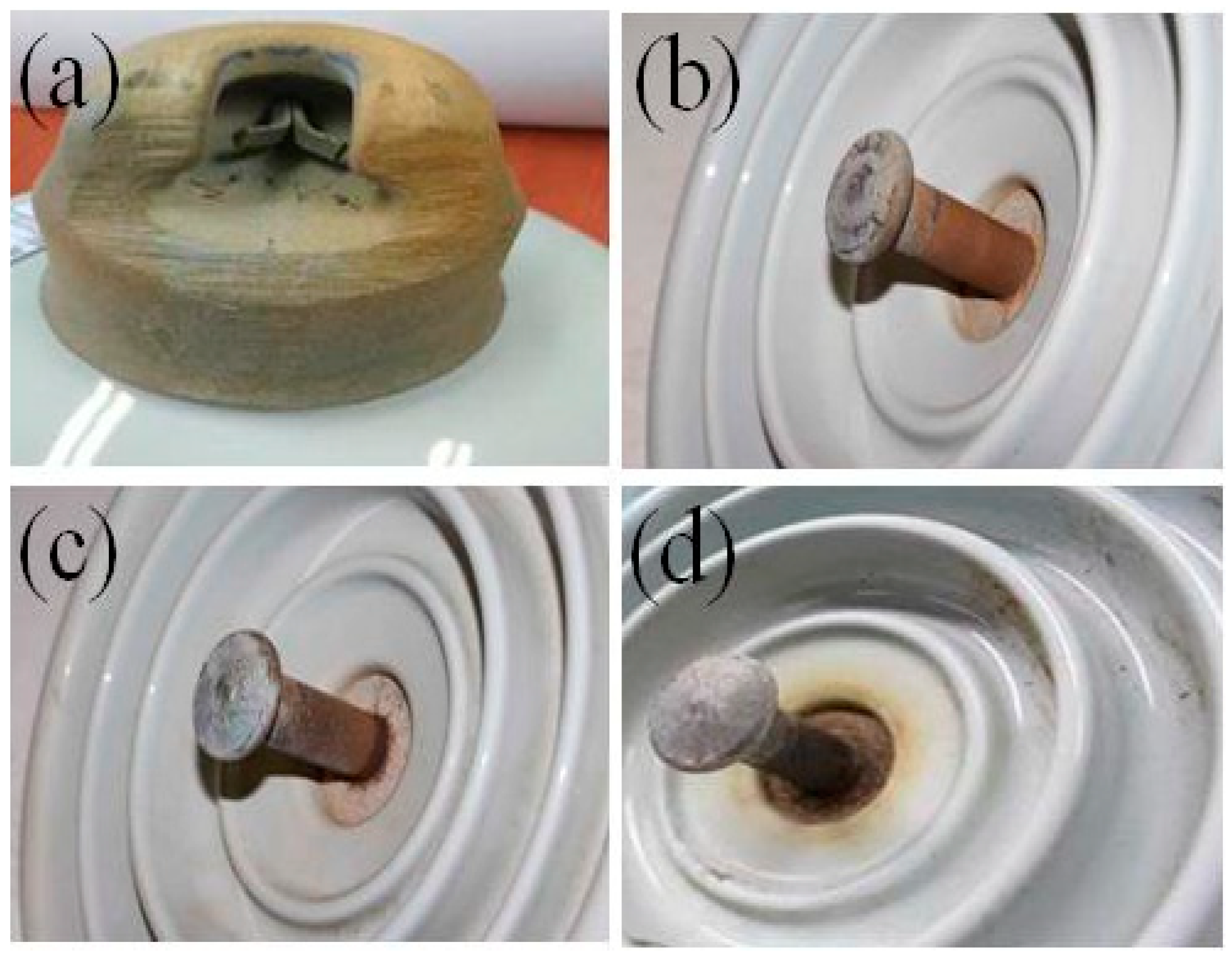

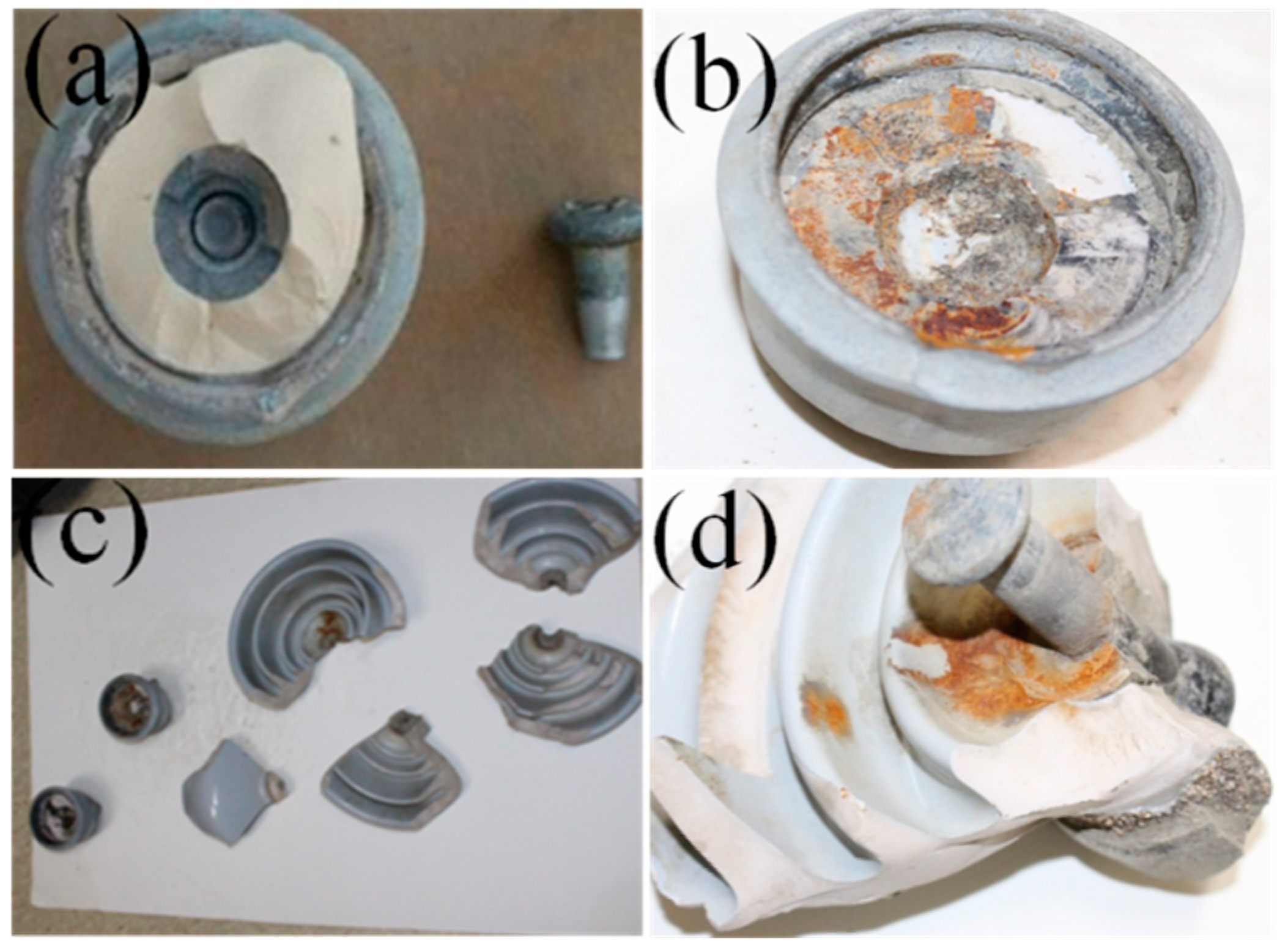
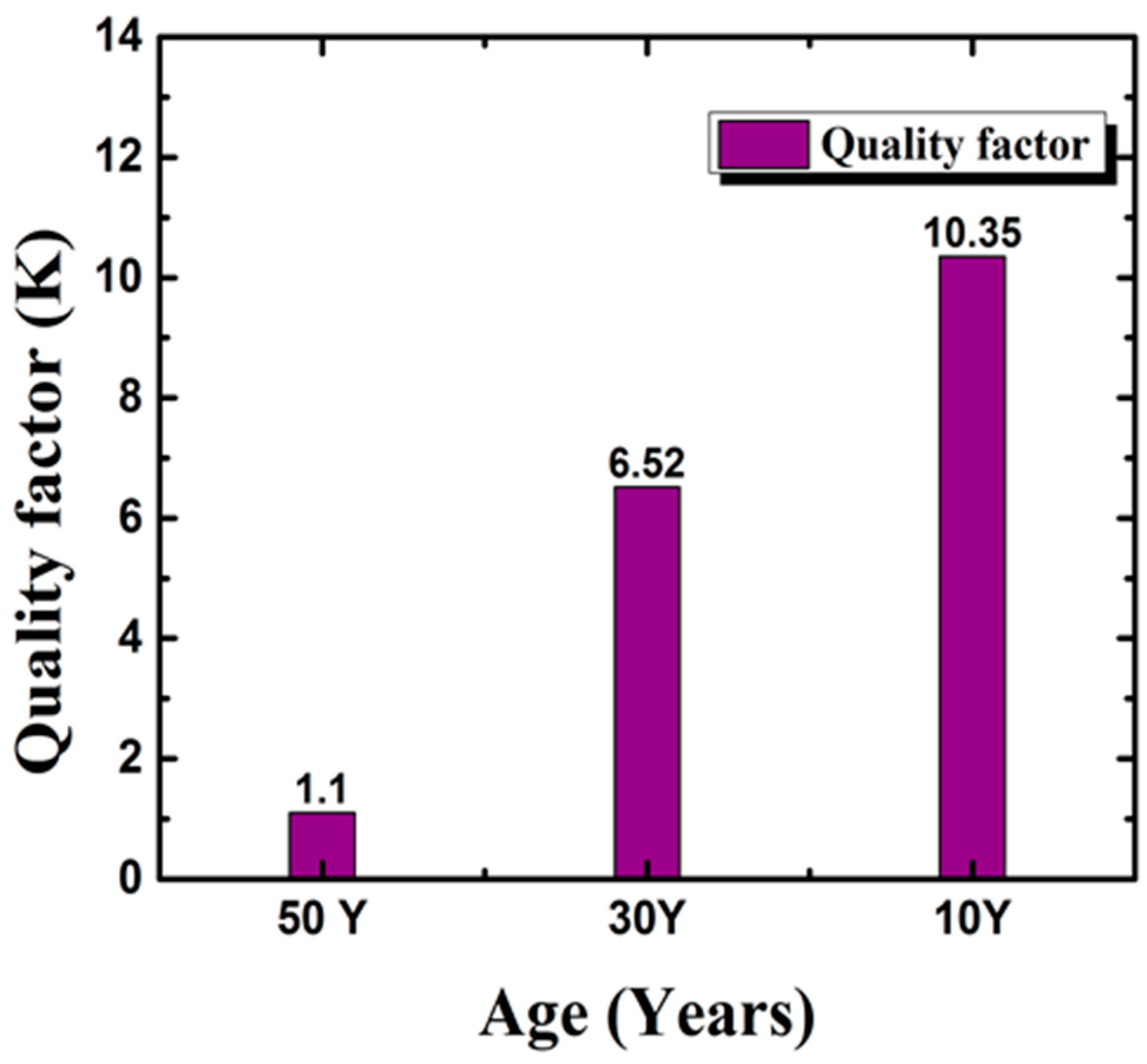
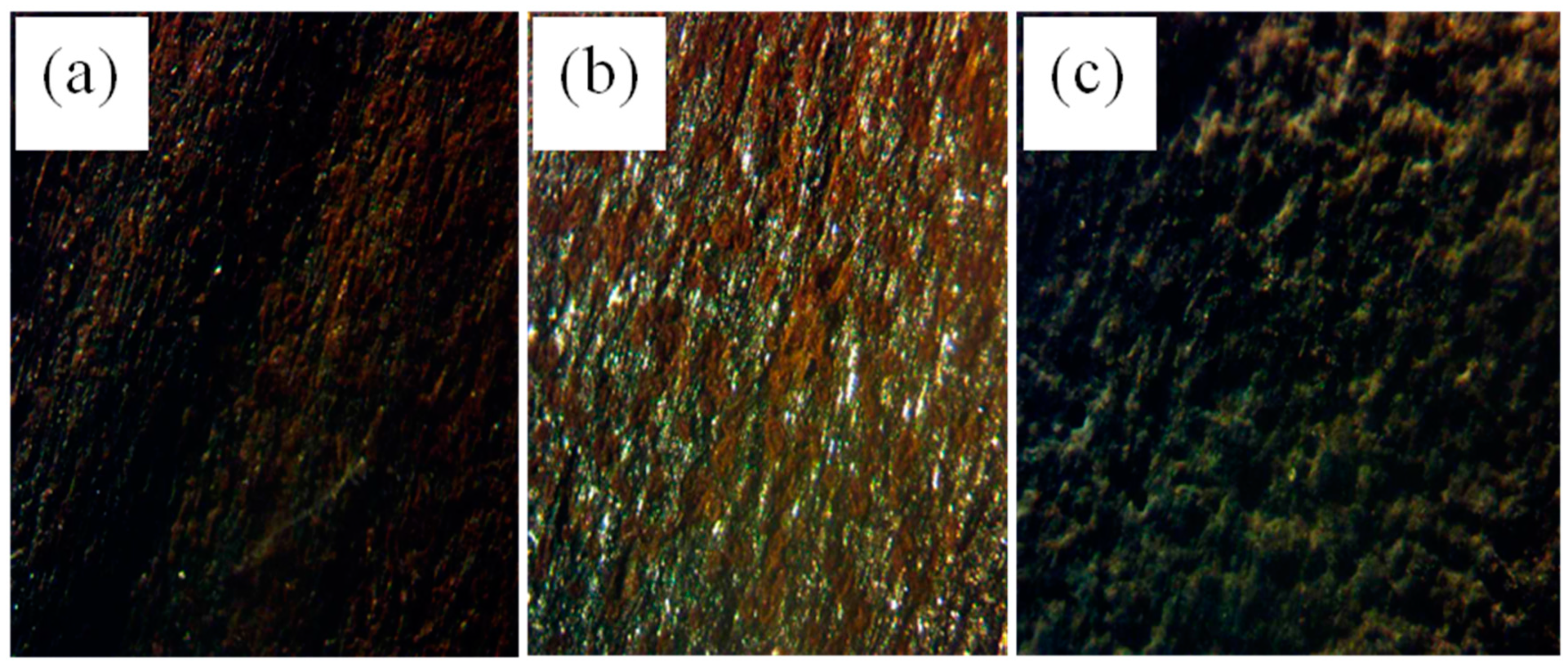

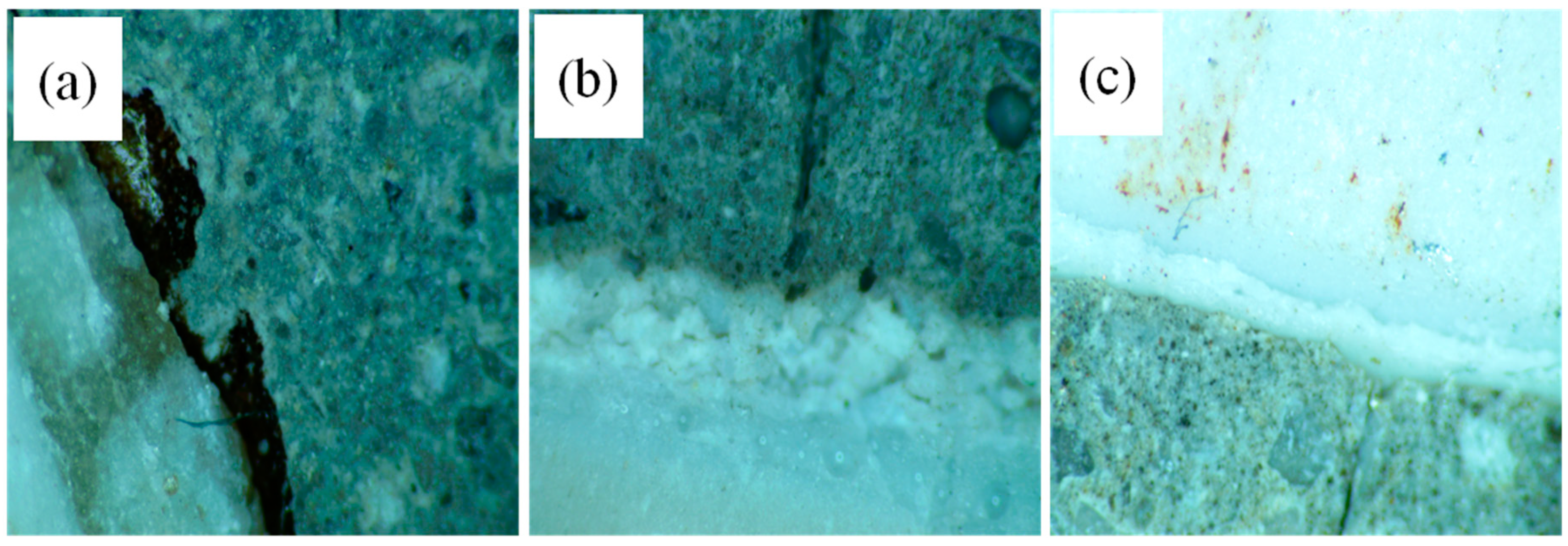


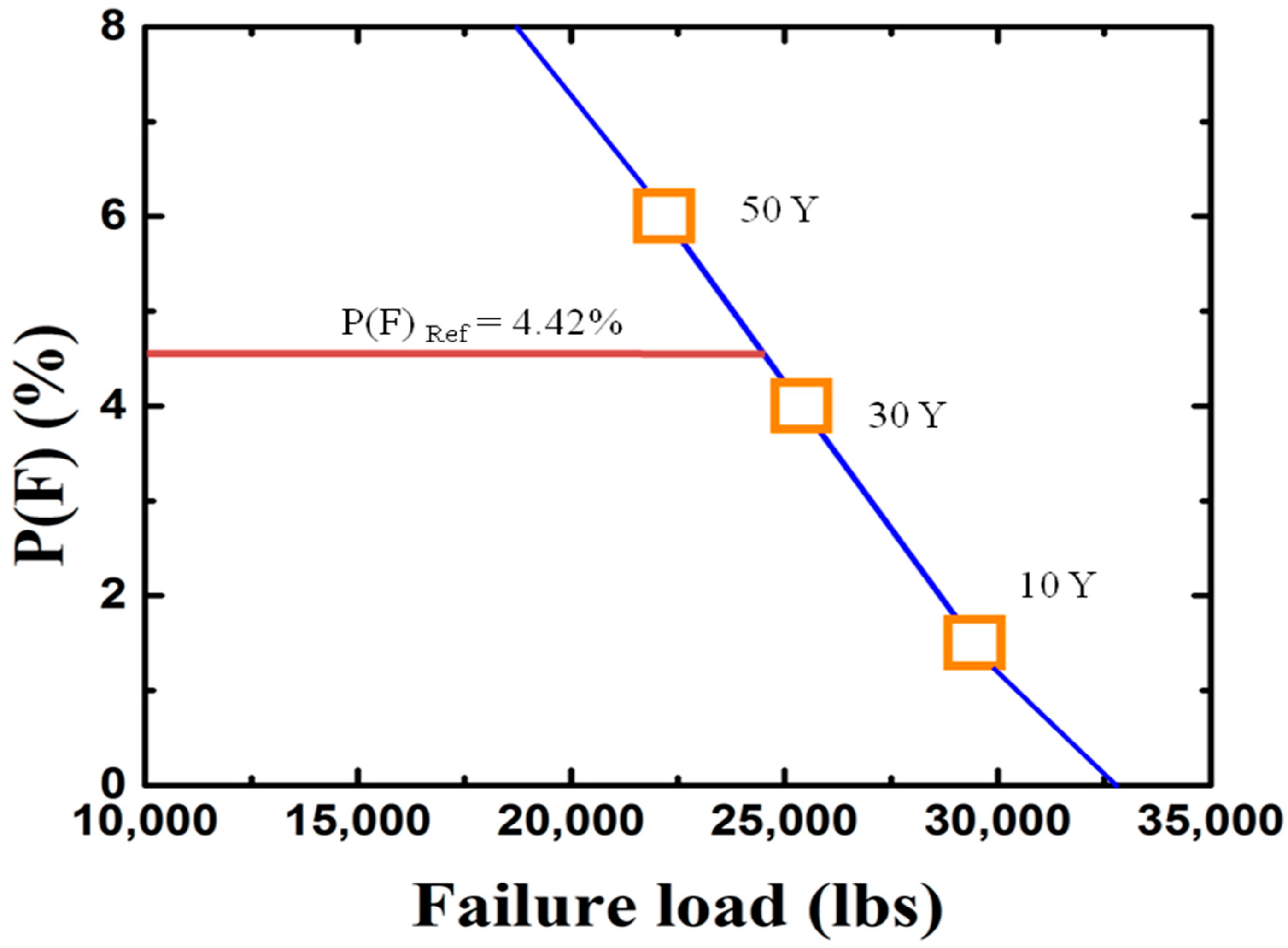
| Insulator Id | Failure Load (lbs) | |||||
|---|---|---|---|---|---|---|
| 50 Y | Mechanical and Electrical Rating (M+E) (lbs) | 30 Y | M+E (lbs) | 10 Y | M+E (lbs) | |
| 1 | East S.K | 25,000 | East S.K | 25,000 | North S.K | 25,000 |
| 2 | East S.K | 25,000 | North S.K | 25,000 | West S.K | 25,000 |
| 3 | North S.K | 25,000 | East S.K | 25,000 | South S.K | 25,000 |
| 4 | West S.K | 25,000 | East S.K | 25,000 | East S.K | 25,000 |
| 5 | South S.K | 25,000 | South S.K | 25,000 | East S.K | 25,000 |
| 6 | East S.K | 25,000 | North S.K | 25,000 | South S.K | 25,000 |
| 7 | North S.K | 25,000 | West S.K | 25,000 | North S.K | 25,000 |
| 8 | East S.K | 25,000 | South S.K | 25,000 | West S.K | 25,000 |
| 9 | East S.K | 25,000 | East S.K | 25,000 | South S.K | 25,000 |
| 10 | South S.K | 25,000 | East S.K | 25,000 | North S.K | 25,000 |
| Insulator Id | Failure Load (lbs) | |||||
|---|---|---|---|---|---|---|
| 50 Y | Remarks | 30 Y | Remarks | 10 Y | Remarks | |
| 1 | 20,980 | Neck | 26,960 | Pin | 25,760 | Pin |
| 2 | 12,010 | Neck | 25,400 | Pin | 28,860 | Neck |
| 3 | 22,160 | Pin | 25,010 | Pin | 30,000 | Pin |
| 4 | 25,820 | Pin | 27,010 | Pin | 28,710 | Pin |
| 5 | 22,180 | Pin | 22,450 | Neck | 27,540 | Neck |
| 6 | 27,680 | Neck | 22,690 | Pin | 29,270 | Pin |
| 7 | 12,040 | Shattered | 28,750 | Pin | 30,990 | Pin |
| 8 | 25,160 | Pin | 25,480 | Neck | 29,940 | Pin |
| 9 | 28,030 | Shattered | 24,960 | Pin | 30,870 | Pin |
| 10 | 25,800 | Shattered | 25,300 | Pin | 32,600 | Pin |
© 2020 by the authors. Licensee MDPI, Basel, Switzerland. This article is an open access article distributed under the terms and conditions of the Creative Commons Attribution (CC BY) license (http://creativecommons.org/licenses/by/4.0/).
Share and Cite
Sanyal, S.; Kim, T.; Seok, C.-S.; Yi, J.; Koo, J.-B.; Son, J.-A.; Choi, I.-H. Replacement Strategy of Insulators Established by Probability of Failure. Energies 2020, 13, 2043. https://doi.org/10.3390/en13082043
Sanyal S, Kim T, Seok C-S, Yi J, Koo J-B, Son J-A, Choi I-H. Replacement Strategy of Insulators Established by Probability of Failure. Energies. 2020; 13(8):2043. https://doi.org/10.3390/en13082043
Chicago/Turabian StyleSanyal, Simpy, Taeyong Kim, Chang-Sung Seok, Junsin Yi, Ja-Bin Koo, Ju-Am Son, and In-Hyuk Choi. 2020. "Replacement Strategy of Insulators Established by Probability of Failure" Energies 13, no. 8: 2043. https://doi.org/10.3390/en13082043
APA StyleSanyal, S., Kim, T., Seok, C.-S., Yi, J., Koo, J.-B., Son, J.-A., & Choi, I.-H. (2020). Replacement Strategy of Insulators Established by Probability of Failure. Energies, 13(8), 2043. https://doi.org/10.3390/en13082043





